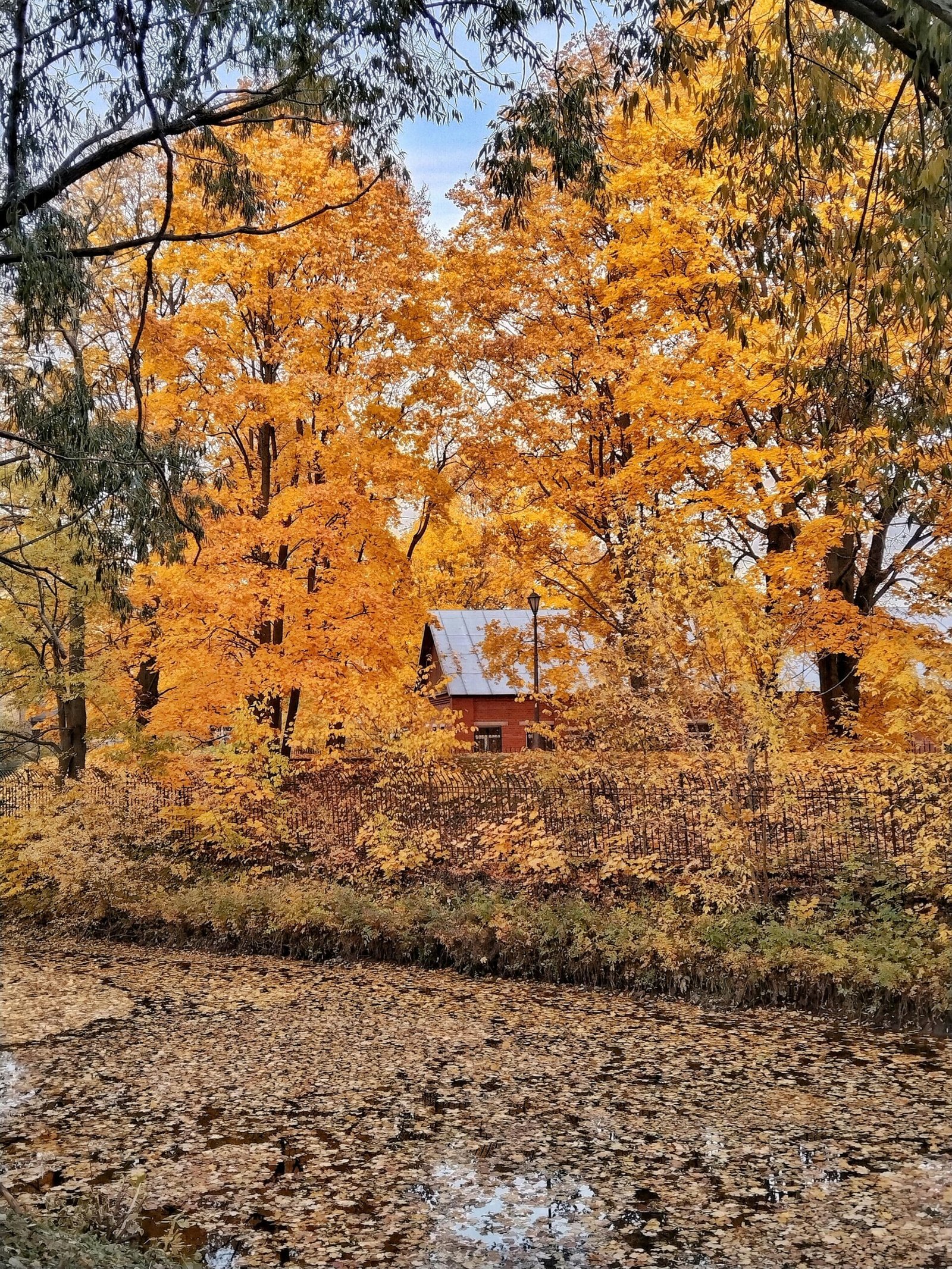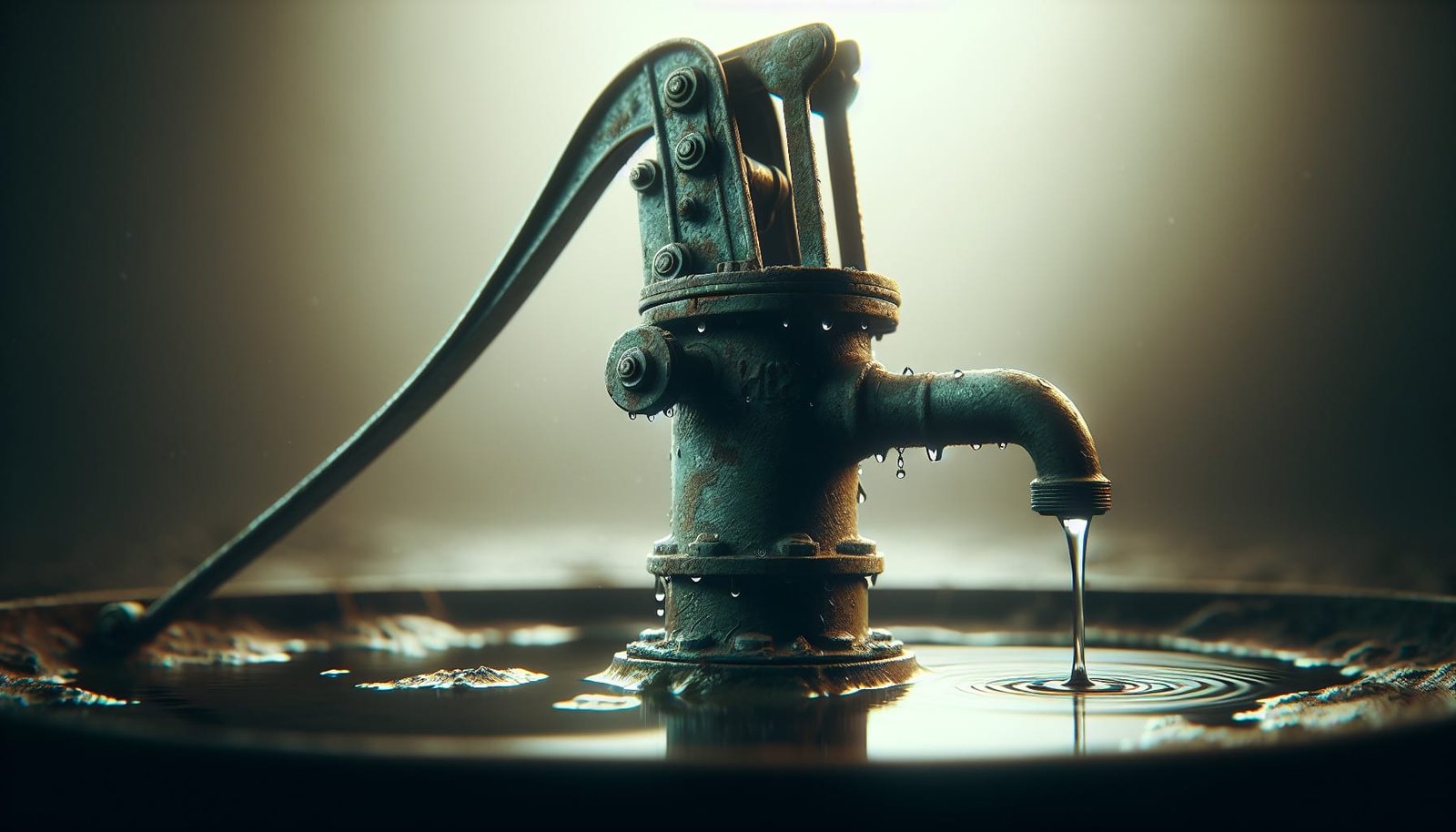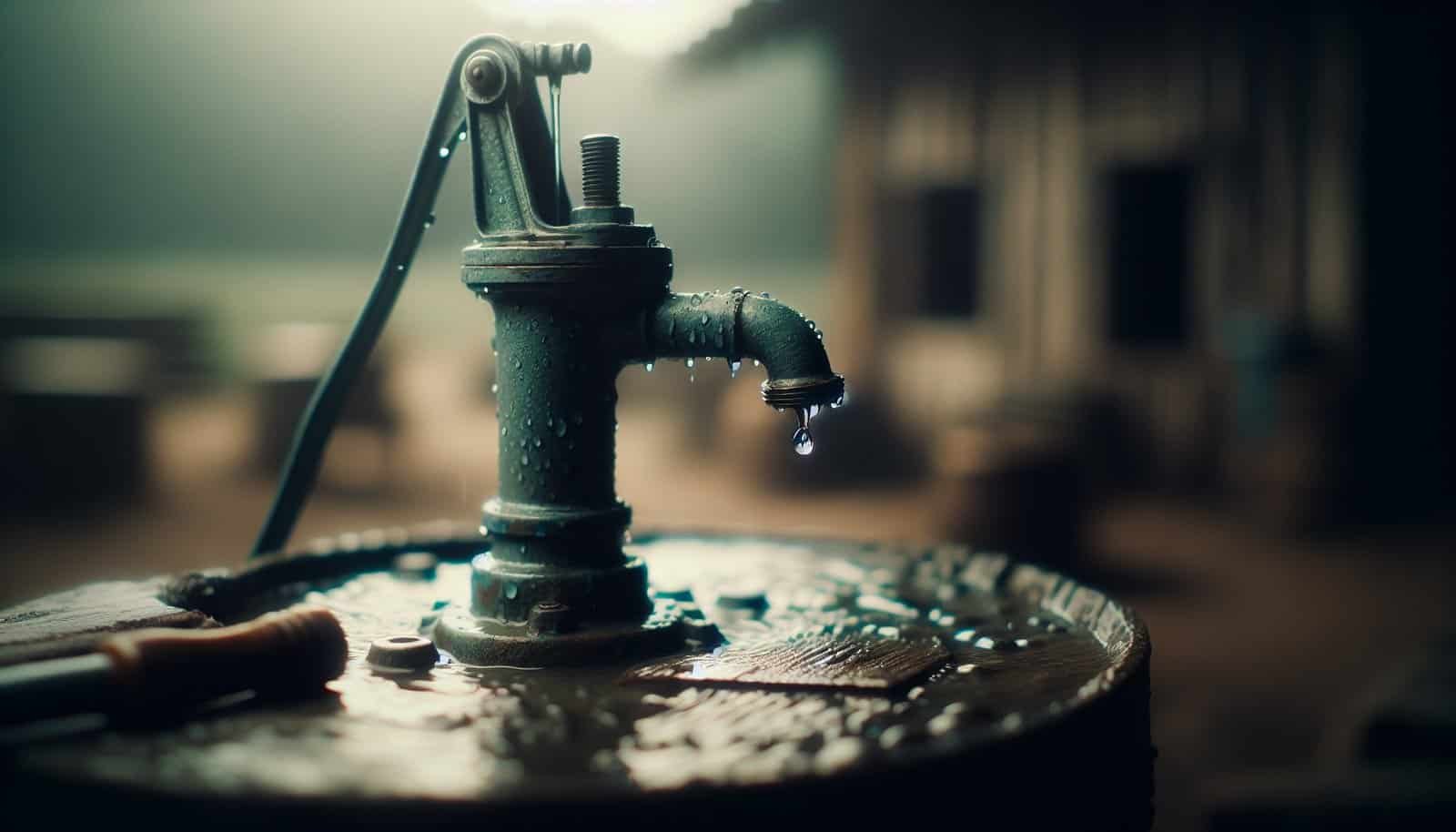Could a septic system be the reason your well water tastes, smells, or tests unsafe?
Can A Septic System Contaminate My Well?
You’re asking an important question that affects your health and property. This article breaks down how septic systems and wells interact, what risks exist, how to detect contamination, and what steps you can take to protect your water.
Why this matters to you
Your private well provides drinking and household water, and your septic system handles your wastewater. When they don’t work well together, contaminants can travel from the drainfield into the groundwater that feeds your well. Understanding how contamination happens helps you make smart choices to protect your family and your home.
How septic systems and wells are connected
Septic systems discharge treated wastewater into the soil, where it percolates into groundwater. If your well draws from that same groundwater, there’s a potential pathway for contaminants to move from the septic system to the well.
Groundwater flow, soil filtration, system design, and local geology all control whether contaminants reach your well. If any of those factors are unfavorable, the risk rises.
Basic components of a septic system
A typical septic system has a septic tank, a distribution box, and a drainfield (leach field). The tank separates solids and begins natural bacterial treatment, while the drainfield spreads effluent into the soil.
If any component fails—due to solids escaping the tank, clogs, overloading, or damage—the system can release poorly treated wastewater closer to groundwater, increasing contamination risk.
Types of wells and their vulnerability
Wells vary: shallow dug wells, bored or drilled wells, and bedrock wells. Shallow wells and those with poor casing or sealing are more vulnerable to surface and near-surface contamination.
Confined aquifers are generally safer than unconfined ones, because a confining layer reduces direct contamination risk. You need to know your well type to understand your vulnerability.

Common contaminants from septic systems
Septic systems can introduce both biological and chemical contaminants into groundwater. The most common contaminants include:
- Pathogenic bacteria and viruses (e.g., E. coli, coliforms)
- Nitrate and nitrite
- Phosphorus (in some soils)
- Pharmaceuticals and personal care chemicals
- Household cleaning chemicals and solvents
These contaminants have different mobility in soil and different health consequences. You should test your well for the most relevant ones based on risk factors and local conditions.
Table: Contaminants and potential health effects
| Contaminant | Source from Septic/Household | Health effects |
|---|---|---|
| Total coliforms / E. coli | Fecal bacteria from wastewater | Gastrointestinal illness; E. coli may cause severe infection |
| Viruses | Human fecal matter | Gastroenteritis, other infections |
| Nitrate / Nitrite | Urine and fertilizers | Methemoglobinemia (blue baby syndrome) in infants; other health risks |
| Phosphorus | Household waste, detergents | Algal growth in surface water; limited direct human health effects |
| Pharmaceuticals | Human excretion, household disposal | Unknown long-term effects, antibiotic resistance concerns |
| Volatile organic compounds (VOCs) | Solvents, household chemicals | Neurological, liver/kidney effects; some are carcinogenic |
How contaminants travel from septic to well
The journey from a septic system to your well usually follows groundwater flow, but several mechanisms can speed or redirect contaminant travel:
- Direct flow through permeable soils or fractures in bedrock
- Preferential pathways such as storm drains, old borings, or tile drains
- High water tables or seasonal flooding that saturate treatment soils
- Damaged or shallow well casings that allow surface water entry
- Hydraulic overloading of the septic system from excessive water use
You should evaluate both surface and subsurface pathways when assessing risk.
Soil and geology: nature’s filter
Soil type matters a lot. Sandy soils and fractured bedrock provide little filtration and allow contaminants to move fast. Clayey soils have better filtration but may cause effluent to flow laterally if they are impermeable.
Your property’s geology determines how much natural attenuation (removal or reduction) occurs before effluent reaches groundwater. If natural attenuation is limited, the risk to your well increases.

Factors that increase contamination risk
Not every property with a septic system and well is dangerous, but certain factors raise the likelihood of contamination. If you have one or more of these, take extra precautions:
- Septic system located too close to the well
- Shallow groundwater or high seasonal water table
- Sandy soils, fractured bedrock, or shallow soils over bedrock
- Older septic system without modern safeguards (no baffles, damaged tank)
- Recent flooding, heavy rains, or snowmelt
- Unmapped or unknown old wells, tile drains, or boreholes
- Overuse of system (e.g., renting the property or large households)
Setbacks and regulations
Local building codes and health departments usually set minimum setbacks (distances) between wells and septic components. These distances vary, but common minimums range from 50 to 150 feet depending on local conditions and soil type.
Even if you meet minimum setbacks, you still need to consider flow direction and local hydrogeology; minimum distances are a baseline, not absolute protection.
Signs your well may be contaminated
You might notice physical signs or health symptoms, but contamination is often invisible without testing. Red flags include:
- Cloudy, discolored, or foul-smelling water
- Sudden change in taste
- Gastrointestinal illness among household members, especially after heavy rain
- Sudden presence of coliform bacteria on lab tests
- Decreased water pressure from sediment-clogged pumps
If you see any of these, treat your water as potentially unsafe and get it tested immediately.
When to test your well
You should test your well when:
- You buy or sell a property.
- You install or alter a septic system.
- Your well or septic system is damaged or flooded.
- Anyone in your household becomes ill with symptoms that could be waterborne.
- You detect changes in water clarity, taste, or smell.
- You haven’t tested in a year (routine testing).
Testing after heavy rain, melting snow, or septic work is particularly important.

Recommended testing: what to test for and how often
Different tests reveal different risks. At minimum, you should test for total coliform bacteria and nitrates. Additional tests depend on local risks and household needs (pregnant women, infants, immunocompromised).
Table: Recommended testing frequency
| Test | Why it matters | Suggested frequency |
|---|---|---|
| Total coliform / E. coli | Indicates fecal contamination and pathogens | Annually; immediately if problems occur |
| Nitrate / Nitrite | Indicates sewage or fertilizer contamination | Annually; more often for infants/pregnant households |
| pH, hardness, iron, manganese | Affects plumbing and treatment system choice | Every 2–3 years |
| VOCs and synthetic chemicals | If nearby industry, spills, or solvent use | As indicated by local risk or suspected exposure |
| Pharmaceuticals / endocrine disruptors | Emerging concern if septic is suspected source | Periodic testing if local concern exists |
| Giardia/Cryptosporidium | Protozoa risk if surface water influence | If indicated by illness or hydrologic conditions |
Always use a certified lab and proper sampling procedures. Improper sampling can lead to false results.
How to collect a reliable sample
Follow the lab’s instructions precisely: use sterile bottles, avoid contaminating the inside of the cap, let the water run to purge standing water, and refrigerate samples as directed. Many labs provide sample bottles and instructions specific to the tests you need.
What to do if your well tests positive
If your well tests positive for coliforms or other contaminants, act quickly to protect health and correct the problem.
- Stop drinking the water; use bottled water or boil water for at least one minute for drinking and cooking until you address the issue. (For households at high risk, bottled water is safer than temporary boiling.)
- Contact your local health department and a certified well or water specialist for guidance.
- Retest after any corrective actions such as shock chlorination or septic repair.
- Inspect and service your septic system: pump the tank, check baffles, and inspect the drainfield.
- Investigate and seal any abandoned wells, casing leaks, or nearby surface pathways.
Emergency disinfection: shock chlorination
Shock chlorination can kill bacteria in a contaminated well temporarily. It involves adding a strong chlorine solution to the well and flushing through the system. This is a short-term fix and does not address ongoing contamination sources.
If bacteria reappear after chlorination, a contamination source is still present and must be fixed, usually involving septic system repair or source control.

Preventing septic-to-well contamination
Prevention is far better than remediation. You can reduce risk through design choices, maintenance, and good household practices.
- Maintain required setbacks and avoid building or installing wells uphill of septic fields.
- Pump your septic tank every 3–5 years (frequency depends on household size and tank volume).
- Use water efficiently to avoid overloading the septic system.
- Avoid pouring chemicals, solvents, or grease down the drain.
- Install an effluent filter and baffles to prevent solids from leaving the tank.
- Keep surface water away from the drainfield by grading and maintaining gutters.
Advanced septic options for sensitive sites
If your property has a high water table, poor soils, or close proximity to a well, consider advanced systems:
- Mound systems: raise the drainfield above native soil to add filtration.
- Sand filters: improved treatment before effluent enters the soil.
- Aerobic treatment units (ATUs): provide a higher level of biological treatment.
- Constructed wetlands: natural treatment for large properties with space.
These systems cost more but sharply reduce contamination risk in challenging settings.
Repairing a failing septic system
If your septic is failing (soggy drainfield, sewage backups, strong odors), prompt repair is essential.
- Pump the tank to remove accumulated solids.
- Replace damaged baffles or risers.
- Install or repair the distribution box to ensure even flow.
- Replace the drainfield if it’s saturated, heavily clogged, or collapsed.
- Consider upgrading to a modern system if the existing system is old or inadequate.
Repair or replacement costs vary widely; get multiple quotes and consult your local health department about permitting.
Table: Typical cost ranges (approximate, vary by region)
| Item | Typical cost range (USD) | Notes |
|---|---|---|
| Septic tank pumping | $200–$600 | Depends on tank size and travel fees |
| Minor repairs (baffle, distribution box) | $300–$2,000 | Variable by damage |
| New conventional system | $3,000–$10,000 | Depends on soil, tank size, local labor |
| Advanced system (ATU, mound) | $10,000–$30,000+ | Higher treatment level required for difficult sites |
| Well shock chlorination | $50–$300 | DIY or contractor-assisted |
| Comprehensive contamination remediation | $5,000–$100,000+ | Highly variable based on extent and regulatory needs |
Costs are broad estimates; consult local contractors for accurate quotes.

Sealing old or unused wells
Abandoned or improperly sealed wells provide a direct link between surface contamination and groundwater. You must locate and properly decommission any unused wells on your property.
- Have abandoned wells sealed by a licensed well driller following local regulations.
- Mapping and sealing reduce pathways for septic effluent, surface runoff, and infiltration into aquifers.
This is a common but overlooked risk factor that can dramatically increase contamination potential.
Permitting and local regulations
Your county or state health department sets rules for well drilling, septic installation, setbacks, pumping requirements, and decommissioning. You should always obtain permits for new systems and consult local codes before changes.
Regulations protect public health, so noncompliance can result in fines and required remediation. Your health department can also provide guidance for testing and acceptable treatment options.
Treatment options for contaminated well water
If contamination is present, treatment may be needed at the point of entry (whole-house) or point of use (tap-level). Your chosen treatment depends on the contaminant.
- Bacterial contamination: shock chlorination is a temporary fix; long-term solutions require source control and possibly continuous disinfection systems (chlorination, UV).
- Nitrate: ion exchange, reverse osmosis, or distillation remove nitrates effectively. Point-of-use RO is common for drinking water.
- VOCs: activated carbon filters can be effective for many VOCs; some require more advanced systems.
- Pharmaceuticals: granular activated carbon and advanced oxidation systems may reduce concentrations, but source control is preferable.
Always match treatment to contaminant concentrations and consider certified systems.
Table: Treatment options by contaminant
| Contaminant | Point-of-Use Options | Point-of-Entry Options |
|---|---|---|
| Bacteria/viruses | Boiling, point-of-use UV, RO | Whole-house chlorination, UV systems |
| Nitrate | RO, distillation | Ion exchange, whole-house RO (rare) |
| VOCs | Under-sink activated carbon | Whole-house activated carbon or aeration |
| Iron/manganese | Water softener or RO | Oxidation/filtration systems |
| Pharmaceuticals | Activated carbon, RO | Advanced oxidation, whole-house GAC |
Choose certified equipment and maintain it per manufacturer instructions.
Long-term monitoring and recordkeeping
Monitoring protects your household over time. Keep a log of testing results, septic service records, permits, and any repairs or installations. This information helps identify trends and supports resale or regulatory interactions.
- Test bacteria and nitrates annually.
- Keep septic pump and inspection records.
- Retain well drilling logs and water test certificates.
- Record any storm or flooding events and subsequent tests.
Good records make troubleshooting easier and demonstrate responsible property stewardship.
Practical checklist to protect your well
Use this checklist to reduce the chance your septic system will contaminate your well:
- Know the location of your well, septic tank, and drainfield.
- Maintain required setbacks and keep a buffer zone around the drainfield.
- Pump your tank regularly and inspect system components.
- Repair or replace failing components immediately.
- Seal abandoned wells promptly.
- Test your well annually for bacteria and nitrates.
- Limit household chemical disposal down drains.
- Install advanced septic systems if site conditions require them.
- Keep records of tests, repairs, and permits.
Following these steps reduces risk and helps you respond quickly if a problem appears.
Frequently asked questions (FAQ)
Can bacteria from my septic system reach my well?
Yes, especially if your well is shallow, the septic is too close, the soil is very permeable, or the septic system is failing. Regular testing and proper setbacks are your best defenses.
How far should my septic be from my well?
Local codes vary, but common minimum distances range from 50 to 150 feet. The safe distance depends on soil type, slope, and groundwater flow—consult your local health department for exact requirements.
If my well tests positive for E. coli, can I fix it quickly?
You can shock chlorinate the well for a short-term fix, but you must find and fix the source to prevent recurrence. That usually means inspecting and repairing the septic system and any other potential contamination pathways.
Are advanced septic systems necessary?
If your site has poor soils, a high water table, or the septic must be close to a well, advanced systems such as mound systems or aerobic treatment units can significantly reduce contamination risk. They cost more but add protection.
Will city inspections cover my private well and septic?
Municipal authorities typically regulate new systems and may inspect septic installations, but private systems often require you to proactively test and maintain them. Consult your local health department for inspection programs and guidance.
Final considerations and next steps
Your private well is a valuable resource, and your septic system is essential for wastewater management. They can coexist safely if you understand the risks and take proactive steps to prevent contamination. Regular testing, responsible maintenance, and appropriate system design are the pillars of protection.
If you’re concerned about contamination risk or have recent test failures, contact your local health department, a certified well driller, or a licensed septic professional for a site-specific evaluation. Acting now can prevent health problems, protect property value, and avoid costly remediation later.
